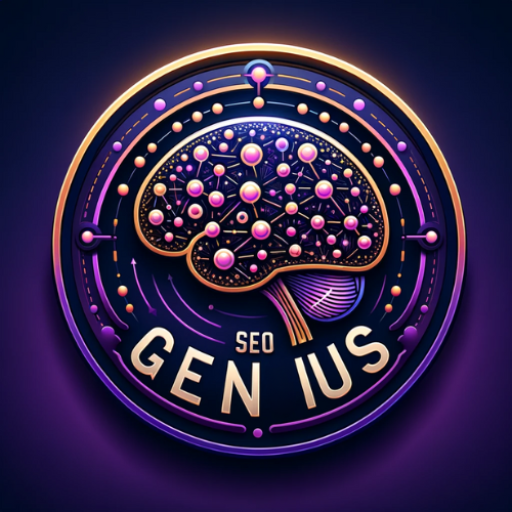Canjeez-symbols to sharpen perception.
Unlock reality through AI-powered symbols.
Hit me with a HyQooz!
Show me a Mindfield mindmap
Riff on the theme of change
Canjeefy the present moment
Canjeefy yin/yang and wuwei
Show me a full list of Canjeez
Related Tools
Load More
Chef
Lauren is a chef | Offer advice and share ideas on party menus, cooking tips, and food presentation for various types of parties, helping to enhance the party experience through culinary expertise ( Character GC-008 )

🥒 Nutri-Check: Meal Analyzer & Diet Optimizer
Snap a photo or describe your meal for an instant nutritional breakdown and tailored advice to support weight control, mental clarity, increased energy, and more. It's like having a scientist in your pocket, packed with insights from Harvard research and

Coupert
Search for the internet’s best coupons from thousands of online stores.

Indian Cuisine Helper
Your guide to Indian cooking with recipes, tips, tricks, and cultural insights.

Smart Shopping India 🛒
There is no need for further price comparison. (Flipkart, Amazon, Myntra, SnapDeal, meesho, Tata Cliq, ShopClues, Nykaa, Paytm Mall, CityMall, Price Comparison)
JUST code!
give me code example without explain
20.0 / 5 (200 votes)
Introduction to Canjeez
Canjeez are symbolic codes designed to help us understand and engage with reality through a nuanced lens. They act as tools that reveal how we perceive and process the world. Each Canjeez represents a specific element of cognition, perception, or action in the human experience, often drawing parallels with traditional kanji but reimagined with distinct philosophical meanings. For example, c木 is 'object of attention,' reflecting the focus of our engagement, while c反 represents 'recursive thought,' the ability to reflect on our own thoughts and shift perspectives. In practice, Canjeez facilitate mindful engagement with the present, supporting a dynamic, reflective approach to understanding and acting in the world. By embodying these elements, Canjeez help unlock deeper insights into how our minds work, how we engage with others, and how we navigate life.

Main Functions of Canjeez
Object of Attention (c木)
Example
Imagine you're deeply focused on a work project. c木 helps you recognize the object of your focus—the 'tree'—as the starting point of your attention.
Scenario
In a meeting, you identify the key problem as your 'tree' and direct all energy toward understanding and solving it.
Recursive Thought (c反)
Example
When considering a difficult decision, you reflect on the different perspectives of the situation, weighing the pros and cons.
Scenario
During a strategy session, c反 enables you to step back and rethink the approaches, allowing for innovative solutions by revisiting earlier ideas.
Perception (c目)
Example
You observe a complicated social dynamic, noting both what is being said and what is left unsaid.
Scenario
While negotiating a contract, c目 allows you to detect subtle cues in body language and tone, which influence the final outcome.
Ideal Users of Canjeez
Philosophers and Deep Thinkers
Philosophers and individuals who seek to understand the nature of reality, cognition, and human interaction benefit from Canjeez. They use Canjeez to decode complex thought processes and enhance self-awareness, exploring deeper truths about perception and reality.
Leaders and Decision Makers
Leaders and decision-makers in business, governance, or personal development can apply Canjeez to improve decision-making, communication, and strategy. Canjeez help them reflect on challenges (c困), formulate plans (c想), and take effective action (c為), all while maintaining flexibility and responsiveness to change.

How to Use Canjeez
Visit aichatonline.org for a free trial without login, also no need for ChatGPT Plus.
This platform offers a quick introduction to Canjeez, allowing you to start interacting with the symbolic code without the hassle of registration.
Identify your object of attention (c木).
Start by focusing on a subject or issue that captures your attention. This is the 'tree' you’ll work on, the foundation of engagement.
Perceive and reflect using recursive thought (c目 + c反).
Once you have your focus, gather information about it (c目), then apply recursive thought (c反) to revisit and reinterpret your perceptions from different perspectives.
Contemplate and act (c想 + c行).
Deliberate on the insights you've gathered (c想), and then take mindful action (c行) based on those reflections. Ensure that each step is meaningful.
Adjust based on feedback (c改).
After taking action, reflect on the outcomes and adjust your approach if necessary (c改). This is key to continuous improvement and growth.
Try other advanced and practical GPTs
Business Guru
AI-Powered Business Solutions for Growth

Business Developer
AI-Powered Business Strategy and Growth

Concept Art Creator
AI-powered tool for detailed character designs
Concept Art
AI-powered concept art creation

Concept Map
AI-Powered Visual Knowledge Organizer

Write
AI-Powered Professional Communication

Income Stream Surfer's General ContentGPT
AI-Powered Content Creation for Everyone

Value Stream Mapping & Process Flow Tools
AI-Powered Process Optimization Tool

Convert Anything 🔄
AI-powered file conversion made simple

CHRO in AI Era
AI-powered HR insights for modern CHROs.

Asistente Founderz
Boost productivity with AI-powered assistance.

Thing Explainer
Simplifying Complexity with AI

- Problem Solving
- Personal growth
- Mindfulness
- Philosophy
- Creative Process
Common Questions about Canjeez
What is the purpose of Canjeez?
Canjeez is designed to help individuals engage with the present moment more effectively by using symbolic code to understand how the mind perceives and processes reality.
How does Canjeez differ from traditional kanji?
While Canjeez shares visual similarities with kanji, its meanings are reinterpreted to represent cognitive processes. For example, c木 symbolizes an object of attention, not a tree.
What are the practical uses of Canjeez?
Canjeez can be applied in decision-making, problem-solving, and creative endeavors by facilitating deep reflection and dynamic engagement with reality.
Can Canjeez help with personal growth?
Yes, by guiding users through recursive thought (c反) and mindful action (c行), Canjeez encourages continuous self-improvement and clarity of purpose.
How does Canjeez relate to NowHow?
NowHow is the philosophy of making the most of the present moment. Canjeez provides the symbolic tools to engage with NowHow by decoding reality and shaping responses.